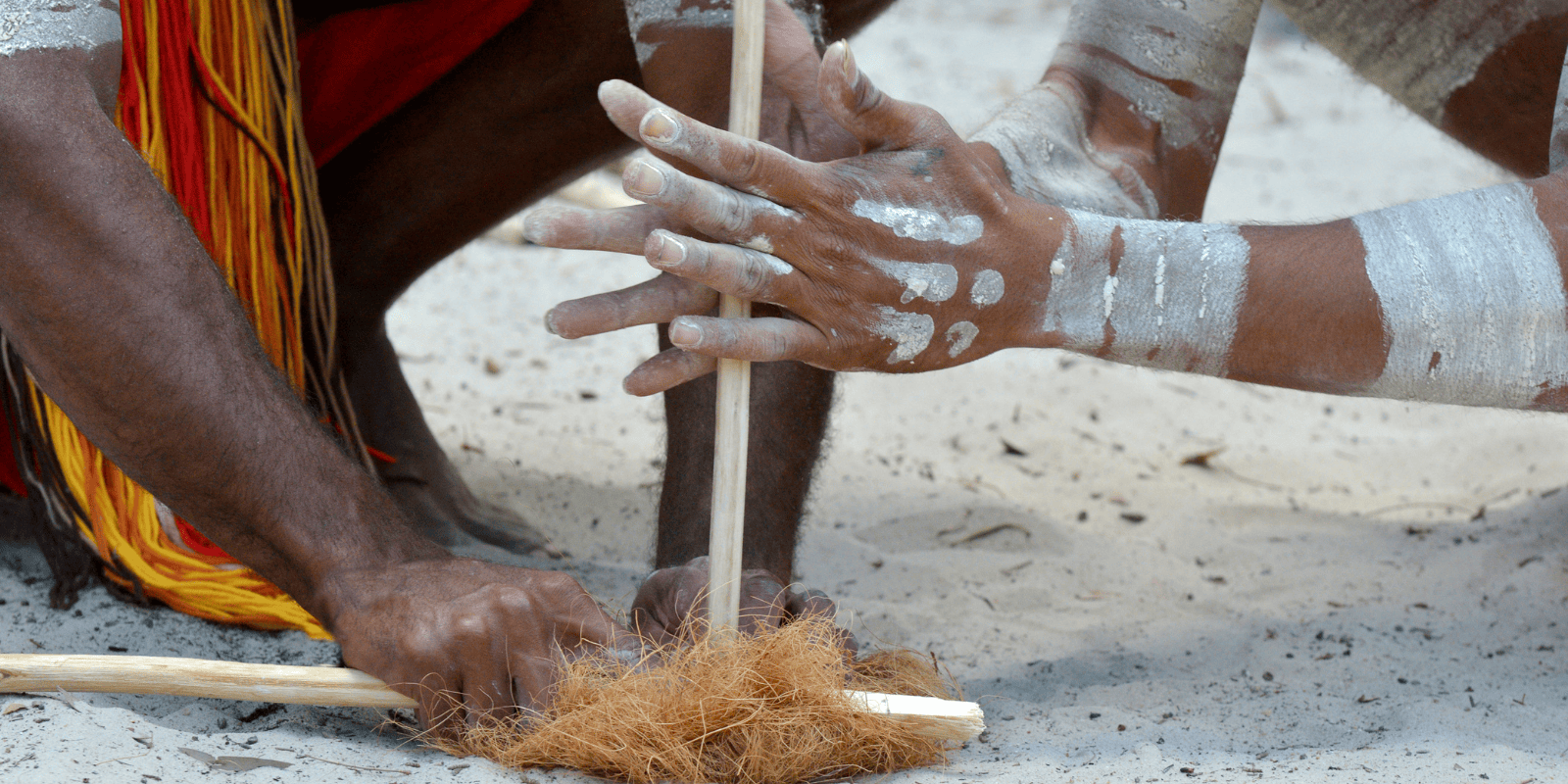
First Nations cultural conversations
Metropolitan Memorial Parks
30 March 2025
Metropolitan Memorial Parks (MMP) would like to thank these First Nations Elders, leaders and staff members for their assistance in the development of this resource: Proud Bidigal and Wandi Wandian Woman Aunty Barbara Simms, Proud Yuin Dunghatti Woman Auntie Dolly Brown, Proud Worimi Women Aunty Debbie Dates and Candy Lee Towers and Tammy Towers, Proud Woolwonga and Gurindji Woman Susan Moylan Coombs, Proud Anaiwan Woman Shalah Johnson (Sutherland Shire Reconciliation ), Brandon Brown, Jai Brown and Bronwyn Purtell of Gandangara Land Council, Proud Bidigal Woman Kelly Wyld of the Reconciliation Catholic Church – Yarra Bay, Proud Bidigal Woman Kimberley Wyld - MMP Customer Care Support, MMP Customer Care Consultant, Marjorie Nelson, Cody Hambly of Joseph Medcalf Funerals Matraville
Indigenous Australians represent about 3% of the national population, and whilst there exists a shared understanding common to most First Nations peoples, their specific funeral rituals and ceremonies are very diverse. A common idea amongst First Nations communities is that death rituals should “ensure the safe passage of the spirit into the afterlife, and to prevent the spirit from returning to cause mischief” (The Steve Sinnot Foundation: Bereavement and Loss Resource).
Community is everything for the Indigenous people of Australia, but especially after a bereavement. For the indigenous peoples of Australia funeral ceremonies are intrinsically a communal time where mourners come together to grieve as one. First Nations people have many varied death rituals and funeral practices, dating back thousands of years, long before the first European settlers discovered the country.
Aboriginal people may share common beliefs, but cultural traditions can vary widely between different communities and territories. These cultural differences mean that funeral traditions, sometimes referred to as ‘sorry business’, are not the same across all Indigenous Australian groups. And it is important to consult local community elders are consulted for specific local practices.
“It is very important to recognise that there are many tribal nations on these lands and waters and that each are unique to themselves each have different Lore, culture, customs and traditions and that each First Nations person comes from one of those Nations and by Lore can only speak for their own Nation regarding Lore and Culture so, most importantly, a First Nation person cannot speak on a Nation that they don't belong to. ‘’
Candy Towers – Proud Worimi Woman
Expressions of grief
Australian First Nations mourning practices vary by community and are connected to spiritual beliefs, ancestral connections, and respect for the land. Expressions of grief include storytelling, communal gatherings, and performing ceremonial dances or rituals.
Smoking ceremonies, in which smoke is used to cleanse the spirit, are commonly performed to aid the deceased’s journey to the spirit world.
"Sorry business” is a significant period of mourning that allows families and communities to remember the deceased collectively. During this time, First Nations peoples often avoid the name of the deceased to prevent disturbing their spirit.
%20(15).png?width=800&height=600&name=Module%20-%20image%20with%20Text%20(800%20x%20600)%20(15).png)
Important: Some Indigenous people find ‘Aboriginal’ offensive
Some First Nations people find the term ‘Aboriginal’ offensive because it is a broad, colonial label that often overlooks the many cultural, linguistic, and historical distinctions of Indigenous groups across Australia. It can be a reminder of the legacy of colonialism and harmful assimilation policies. Many prefer to be identified by their specific nation, such as Dharug, Dharawal, or Gai-mariagal, or by the collective term ‘First Nations,’ which they feel accurately respects their distinctive identities and sovereignty.
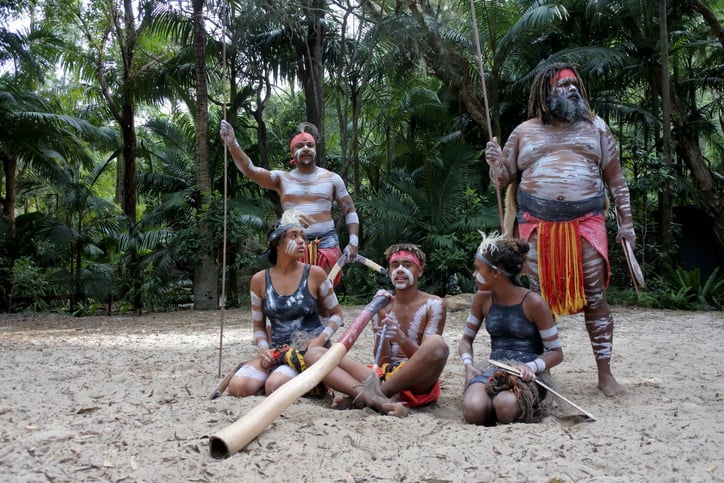
Returning to Country
For First Nations peoples, "Country" is more than land—it represents a deep connection to ancestors, identity, and spirituality. "Returning to Country" is the practice of burying the deceased in their ancestral lands, which is seen as vital for the spirit's rest. Families and communities often collaborate to overcome logistical challenges, sometimes choosing local burial but maintaining cultural ties. Ceremonial elements, like smoking ceremonies and Elder-led rites, guide the spirit and honour the deceased. This process also supports cultural healing for the living by reinforcing identity and heritage.
Explore more about the cultural practices of First Nations peoples, including "Returning to Country," at the Australian Institute of Aboriginal and Torres Strait Islander Studies (AIATSIS) website: AIATSIS Cultural Practices and Country.
Methods of interment and memorialisation
Earth burials – traditional and contemporary
Nations: Darug, Eora, Gadigal and many coastal and inland groups in NSW.
Traditional earth burials are still practiced by many First Nations. The deceased is laid in a shallow grave, either in a foetal position or in alignment with traditional burial customs.
Contemporary burials in urban areas may use modern cemeteries but incorporate cultural practices such as wrapping the body in a possum skin cloak.
Source: "The Earth Beneath" (Australian Museum, 2021), and records of the Australian Institute of Aboriginal and Torres Strait Islander Studies (AIATSIS).
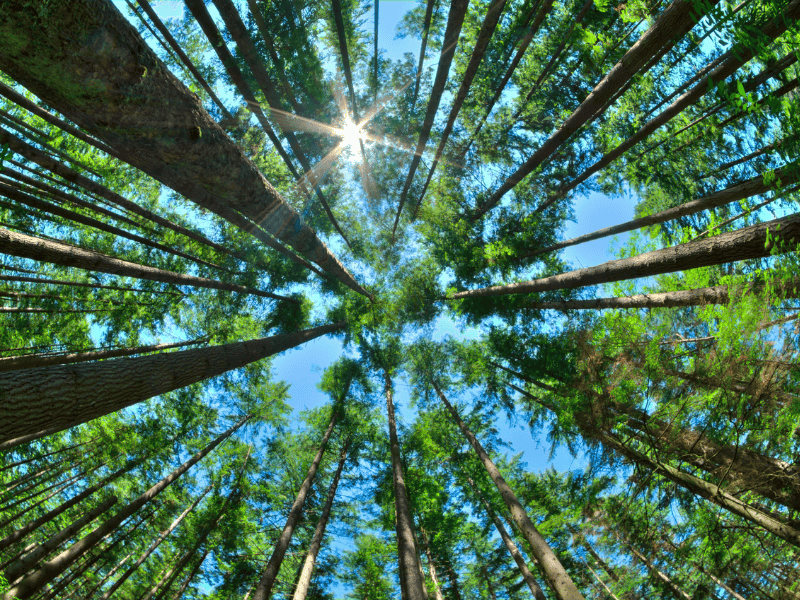
Tree burials
Nations: Kamilaroi, Wiradjuri, and other groups in Northern and Western NSW.
Tree burials involved placing the deceased in trees after death. The body would be wrapped in bark or animal skins, particularly possum skins, and elevated off the ground in tree branches to allow natural decomposition.
Source: “Aboriginal Burial Traditions” (Aboriginal Heritage Office, NSW) and “Living with the Land” (AIATSIS, 2003).
Secondary burial (bone cleansing and reburial)
Nations: Kamilaroi, Wiradjuri, Gamilaraay
After decomposition, the bones of the deceased were exhumed, cleansed, and reburied in significant ceremonial locations. This practice acknowledges the continued presence of the deceased’s spirit and ensures the proper ceremonial passing of the person’s spirit to the ancestors.
Source: “The Living Land: Indigenous Knowledge in Australian Burial Practices” (AIATSIS, 2005).
Cremation
Nations: Yuin, Dharawal, Ngunnawal (South Coast NSW and nearby inland regions)
Cremation was practiced by some nations along the South Coast, where bodies were burned on pyres, and ashes were either scattered in sacred areas or buried. Cremation allowed the spirit of the deceased to be cleansed and to ascend, symbolically releasing the soul from the physical body.
Source: “Cultural Ways: Indigenous Practices in South-East Australia” (Aboriginal Heritage Office, 2020).
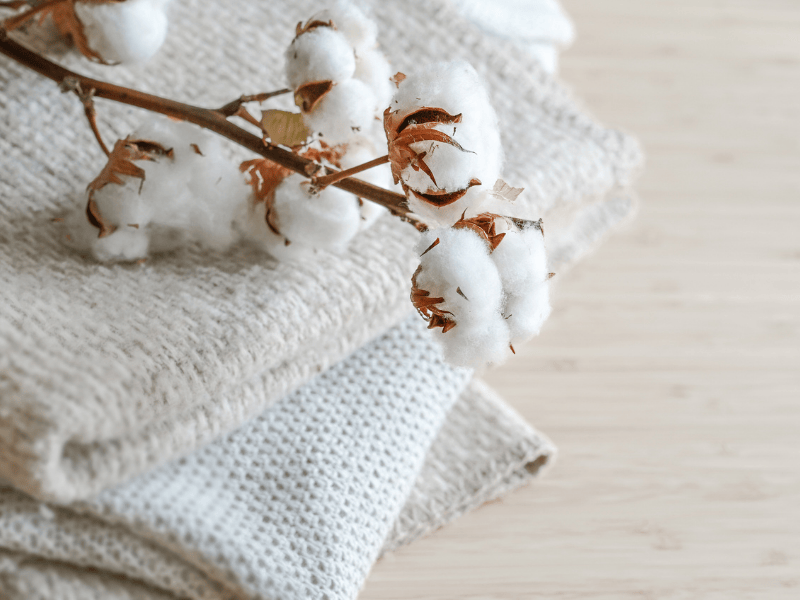
Wrapped or shrouded cremation (contemporary practice)
Nations: Darug, Eora, Gadigal, Darkinjung
Shrouded cremation is a contemporary practice reviving elements of traditional burial and cremation. The body is wrapped in a natural cloth or shroud, reflecting older customs of wrapping bodies in possum skins or natural fibres.
Source: “Aboriginal Communities Today: Evolving Funerary Practices” (NSW Office of Environment & Heritage, 2022).
Memorial poles and markers
Nations: Eora, Gadigal, Darug, Tharawal
Traditionally, graves were marked with carved wooden poles, stones, or trees, serving as memorials and spiritual symbols. In contemporary practices, Aboriginal families often mark graves with totemic symbols that reflect family lineage and cultural identity.
Source: “Memorial Practices among NSW Aboriginal Groups” (Australian Museum, 2021).
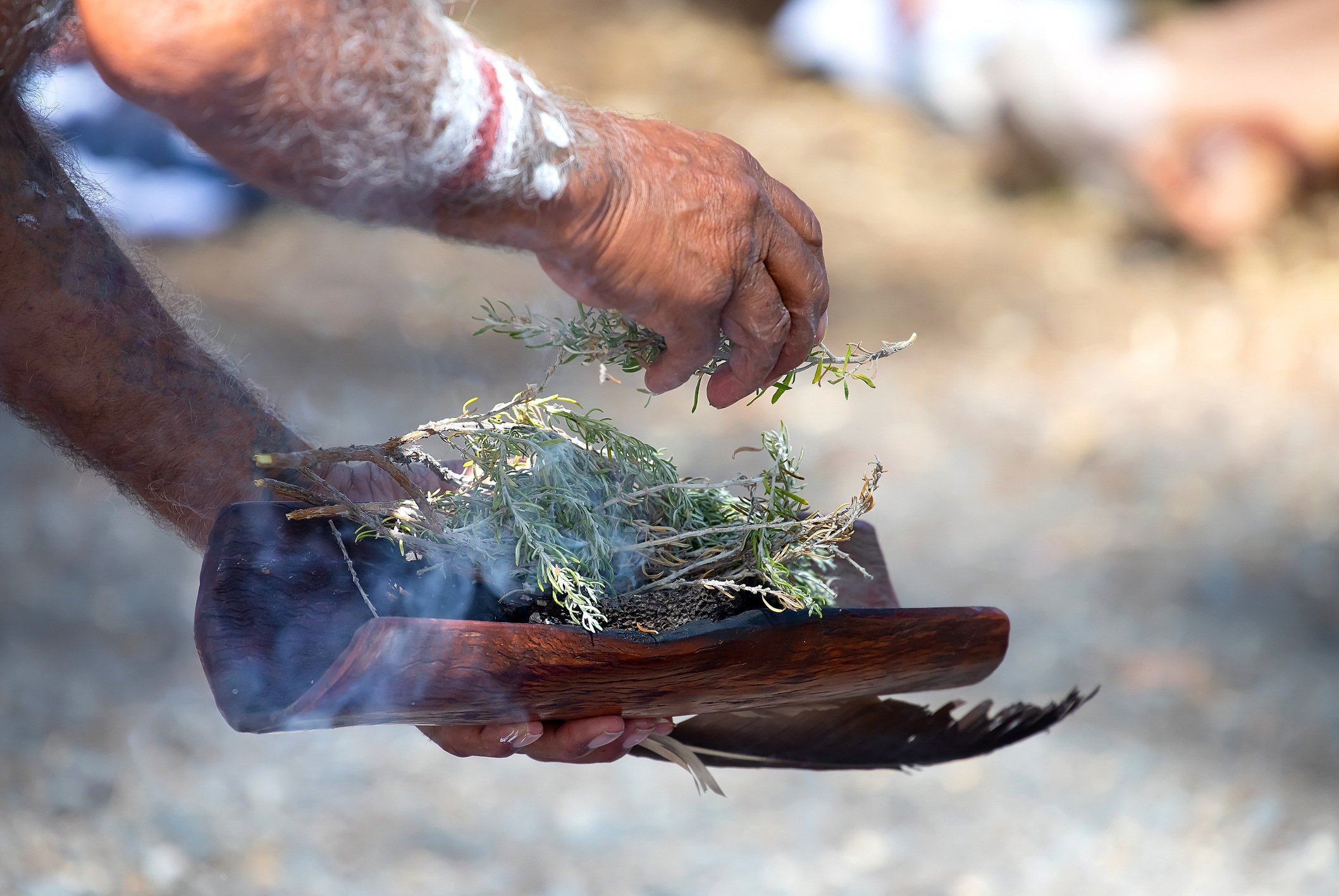
Smoking ceremonies
Practiced by many groups, including the Eora, Bidgigal, Gai Marigal Darug, Wiradjuri, Worimi, Awabakal and Kamilaroi. Smoking ceremonies are a common funerary practice across many First Nations in NSW. The burning of eucalyptus leaves or other native plants is used to cleanse the spirit of the deceased and ensure their safe passage to the spiritual realm.
Source: “Smoking Ceremonies: Rituals and Cultural Significance” (NSW Aboriginal Land Council, 2020).
Burial in ancestral Country
Nations: Darug, Wiradjuri, Gamilaraay, and others in NSW.
Many Indigenous people in NSW choose to be buried in their traditional Country, reflecting a spiritual connection to the land. For example, Darug or Wiradjuri families may return to their ancestral lands for burials, even if they live in urban areas.
Source: "Returning to Country: Aboriginal Burial Practices in NSW" (NSW Office of Environment and Heritage, 2022).
Natural burial (revival of traditional practices)
Nations: Wiradjuri, Kamilaroi, Gumbaynggirr, Bundjalung.
Natural burial involves returning the body to the earth without embalming or synthetic materials. This practice mirrors the traditional Indigenous emphasis on natural return to the earth.
Source: “Natural Burial and Aboriginal Cultural Practices” (NSW Environmental Defenders Office, 2020).
Stolen Generations Memorial at Eastern Suburbs Memorial Park
On 26 May 2017, Eastern Suburbs Memorial Park (ESMP) officially opened a new memorial dedicated to the Aboriginal Community, remembering Aboriginal children who were taken away from their parents, and those parents who were laid to rest at ESMP before their children returned home.
The monument commemorates all Aboriginal and Torres Strait Islander children who were forcibly removed from their families. These children are known as the Stolen Generations. It also commemorates parents who are buried in the Memorial Park before their children returned home. La Perouse elder, Aunty Barbara Simms-Keele campaigned for years to have the monument built.
The monument incorporates elements symbolic to the La Perouse Aboriginal community. Elements include fish and shells all known to the area, and elements relating to men`s business, including the boomerang, shield, nulla nulla and spear. Seating in the shape of a fishing boat commemorates the community`s saltwater connections. A child's footprints are etched in the monument, growing into adult feet, signifying the journey of children leaving and returning home.
The Stolen Generations (also known as Stolen children) is a term used to describe the children of First Nations peoples who were removed from their families by the Australian Federal and State government agencies and church missions, under acts of their respective parliaments. The removals occurred in the period between approximately 1869 and 1969, although in some places children were still being taken in the 1970s. Many of the children removed from La Perouse were taken to children's home near Nowra in Southern New South Wales. In recognition of those connections, soil from the location of the Bomaderry Children's Home and from the Kinchela Boys` Home and the Cootamundra Girls` School was sprinkled over the monument during the official unveiling.
 |
 |
 |
Wreath laying on National Sorry Day at the Stolen Generation Memorial in 2024
Reconciliation Week 2024
In 2024, MMP hosted Reconciliation Conversations with First Nations Leaders at our main sites.

Learn more about cultural funeral traditions
For more information on cultural end-of-life customs, visit our Cultural Corner Resource Hub.







-1.jpg?width=1600&name=Banner%20(7)-1.jpg)





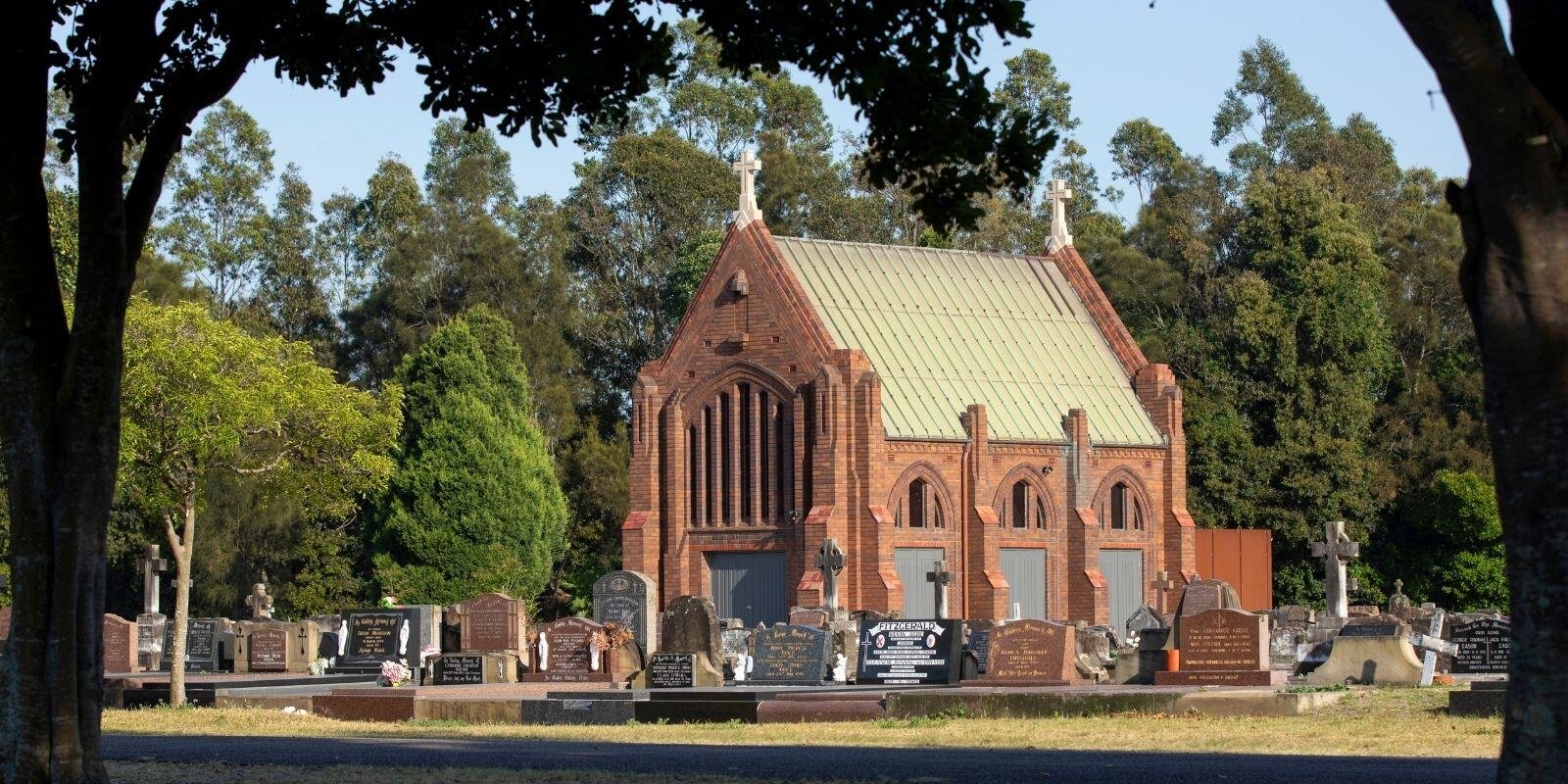

.jpg?width=1600&name=RGC%20Gallery%20(3).jpg)




.jpg?width=2000&name=Copy%20of%20MMP%20Website%20Header%20Image%20Template%20(1).jpg)
.jpg?width=1600&name=WMP%20Wonderfully%20Made%20Memorial%20(1).jpg)

.jpg?width=2000&name=Copy%20of%20MMP%20Website%20Header%20Image%20Template%20(2).jpg)

.jpg?width=800&name=Untitled%20design%20(56).jpg)














